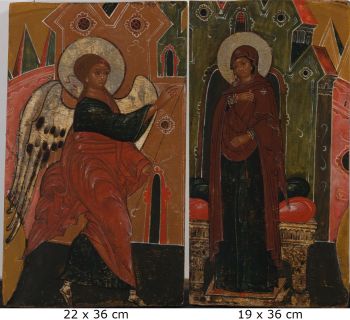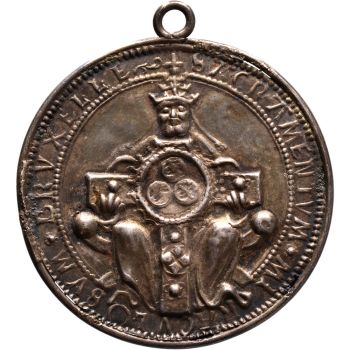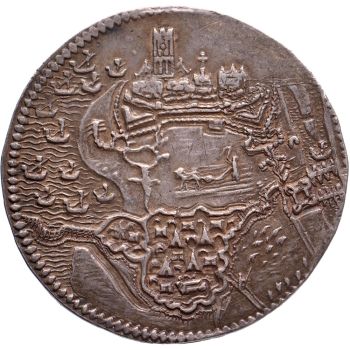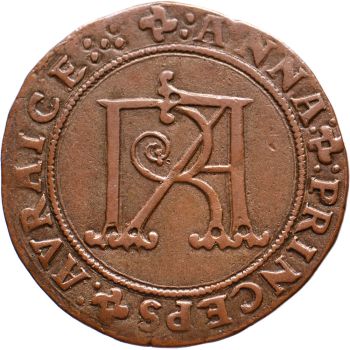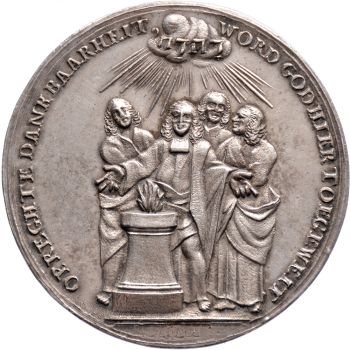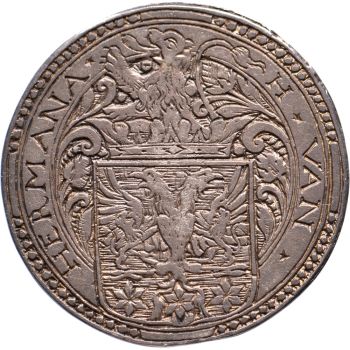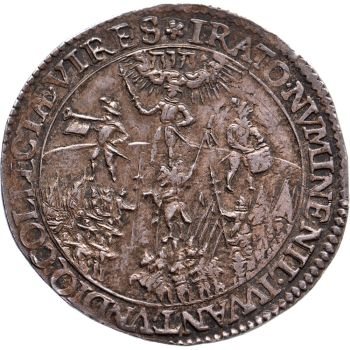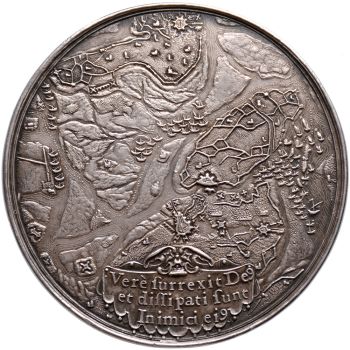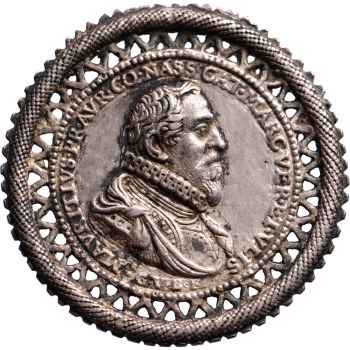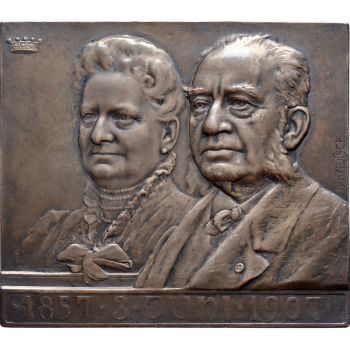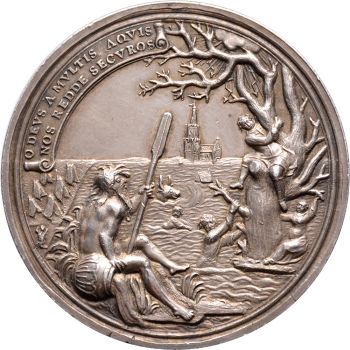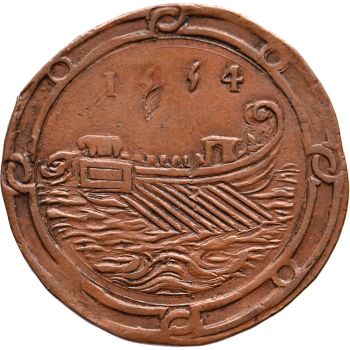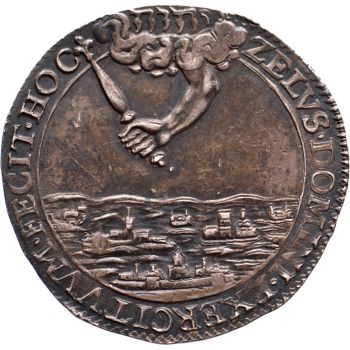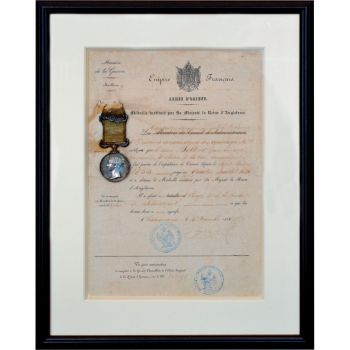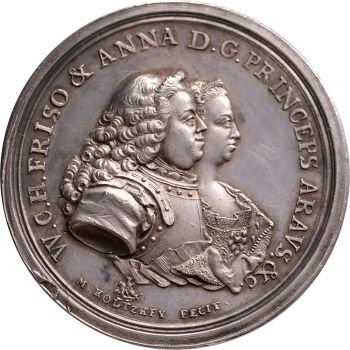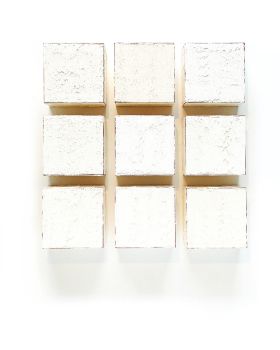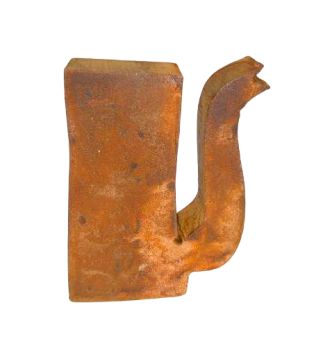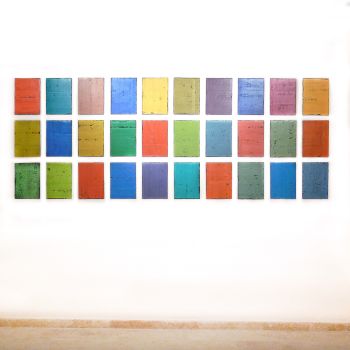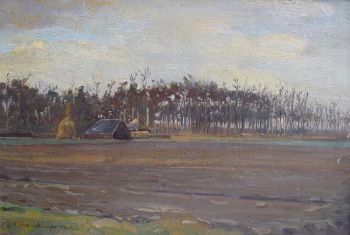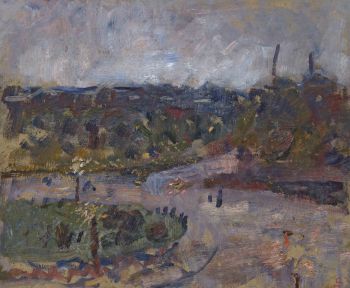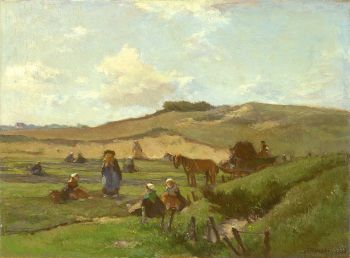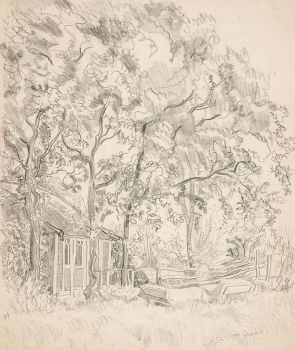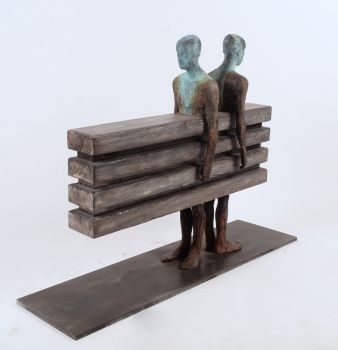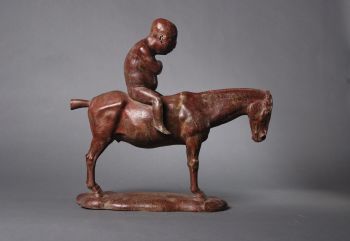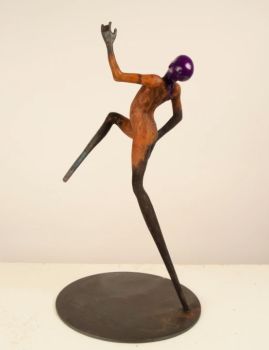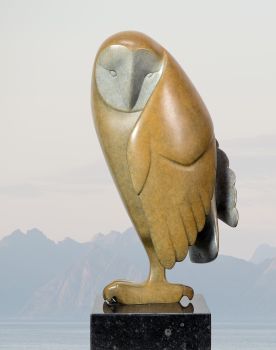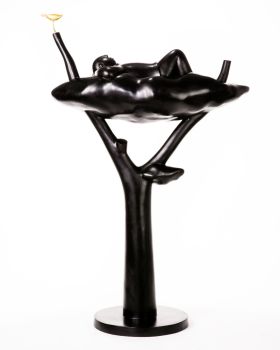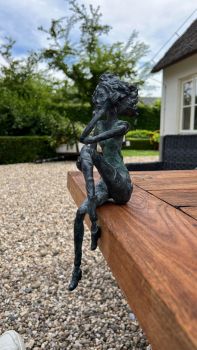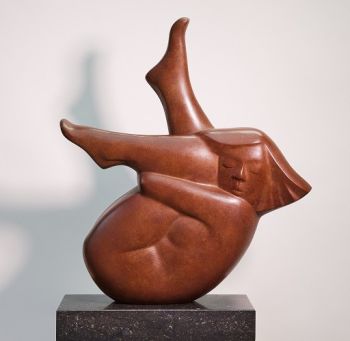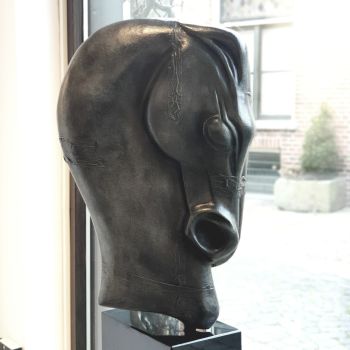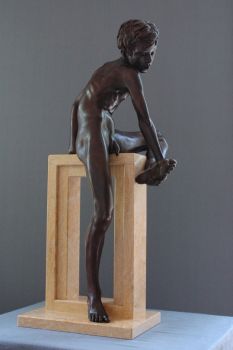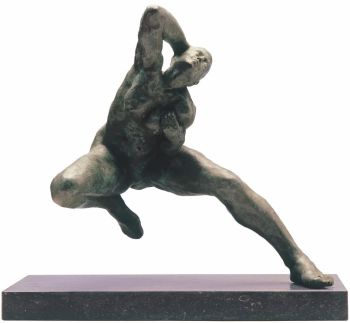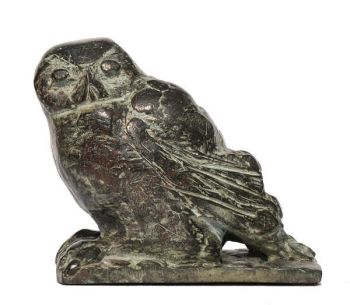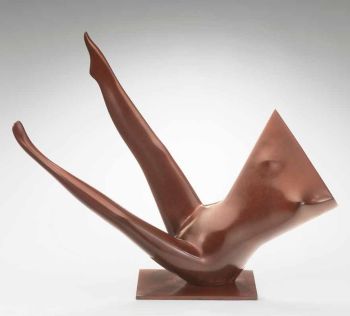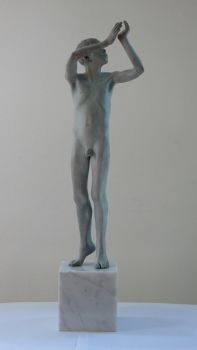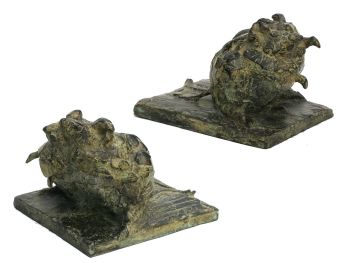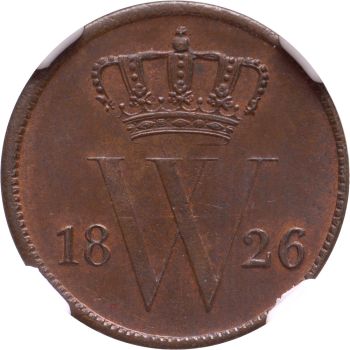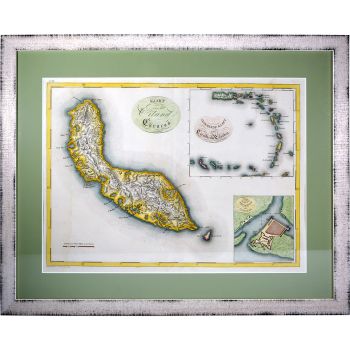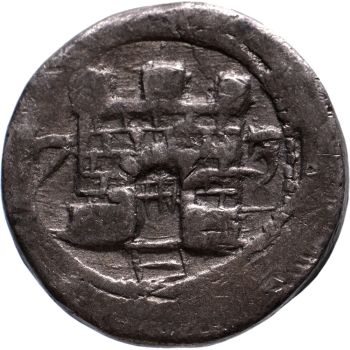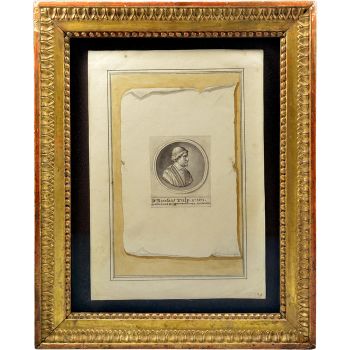Expedition to Brazil and capture of St. Thomas by admiral Van der Does. Betts 20 1599
Artiste Inconnu
Jongeling Numismatics & Ancient Art
- Sur l'oeuvre d'artObverse: EN ALTERA QVÆ VEHAT ARGO, the ship the Argo seen from the side, a standing soldier on the prow, the large sail with the name of Jehovah, the golden fleece hanging from the prow, S.C. underneath
Keerzijde: SIC NESCIA CEDERE FATA MDIC, bird’s-eye view of Bommeler- and Tielerwaard, two border posts in the shape of a human with the Hebrew text for Jehovah between them
RARE
The golden fleece on the prow refers to the myth of Jason and the golden fleece, who performed glorious feats with his argonauts. The caption, an adapted quote from Virgil, also refers to this: “alter erit tum Tiphys et altera quae vehat Argo delectos heroas” (“There will be another Tiphys and another Argo, which shall carry chosen heroes”).
Pieter van der Does was a Dutch admiral (1562-1599) who fought against the Spanish during the Eighty Years’ War (1568-1648). In 1599 he left on an expedition to Brazil with 66 ships, but not before entering into a confrontation with the Spanish to maintain Dutch hegemony at sea. He sailed towards the Spanish-Portuguese coast to set up a blockade there. This failed. He then sailed to Gran Canaria and took Las Palmas. However, he did not hold out here either and continued his journey to South America, where he stocked up on large quantities of wood (mahogany) and sugar in Brazil. He sailed back via the Cape Verde islands and also conquered the island of St. Thomas (São Tomé) on the African west coast. From this island they took 100 cannons, many chests of sugar, ivory and linen. Shortly afterwards, however, Van der Does, together with 1,000 crew members, became seriously ill and died within 15 days. This medal was issued after his death to commemorate his exploits.
Weight: 6.48 g
Diameter: AE 30.0 mm
Grade: Extremely Fine
Reference: vL. 532.2; Dugn. 3472; Betts 20 - Sur l'artiste
Il peut arriver qu'un artiste ou un créateur soit inconnu.
Certaines œuvres ne doivent pas être déterminées par qui elles sont faites ou elles sont faites par (un groupe d') artisans. Les exemples sont des statues de l'Antiquité, des meubles, des miroirs ou des signatures qui ne sont pas claires ou lisibles, mais aussi certaines œuvres ne sont pas signées du tout.
Vous pouvez également trouver la description suivante :
•"Attribué à …." A leur avis probablement une oeuvre de l'artiste, au moins en partie
•« Atelier de …. ou « Atelier de » À leur avis, une œuvre exécutée dans l'atelier ou l'atelier de l'artiste, éventuellement sous sa direction
•« Cercle de… ». A leur avis une oeuvre de la période de l'artiste témoignant de son influence, étroitement associée à l'artiste mais pas forcément son élève
•« Style de … ». ou "Suiveur de ...." Selon eux, une œuvre exécutée dans le style de l'artiste mais pas nécessairement par un élève ; peut être contemporain ou presque contemporain
•« Manière de… ». A leur avis une oeuvre dans le style de l'artiste mais d'une date plus tardive
•"Après …." A leur avis une copie (quelle qu'en soit la date) d'une oeuvre de l'artiste
•« Signé… », « Daté… ». ou « Inscrit » À leur avis, l'œuvre a été signée/datée/inscrite par l'artiste. L'ajout d'un point d'interrogation indique un élément de doute
• "Avec signature ….", "Avec date ….", "Avec inscription …." ou "Porte signature/date/inscription" à leur avis la signature/date/inscription a été ajoutée par quelqu'un d'autre que l'artiste
Êtes-vous intéressé par l'achat de cette oeuvre?
Artwork details
Related artworks
- 1 - 4 / 12
Artiste Inconnu
N.d. Murder of Johan and Cornelis de Witt in The Hague1672
€ 2.250Jongeling Numismatics & Ancient Art
 Sélectionné par
Sélectionné parDanny Bree
Artiste Inconnu
Pair of 19th C French Taxidermy Dioramas1860 - 1890
Prix sur demandeSpectandum Gallery
1 - 4 / 24Johannes Evert Akkeringa
'Nettenboetsters' in the Dunes1861 - 1942
Prix sur demandeStudio 2000 Art Gallery
Artiste Inconnu
N.d. Murder of Johan and Cornelis de Witt in The Hague1672
€ 2.250Jongeling Numismatics & Ancient Art
 Sélectionné par
Sélectionné parDanny Bree
1 - 4 / 24- 1 - 4 / 24
Artiste Inconnu
N.d. Murder of Johan and Cornelis de Witt in The Hague1672
€ 2.250Jongeling Numismatics & Ancient Art
 Sélectionné par
Sélectionné parDanny Bree
1 - 4 / 12











